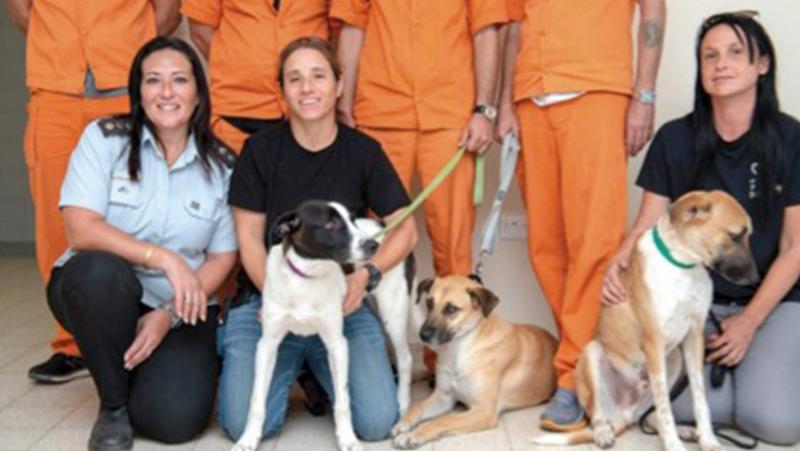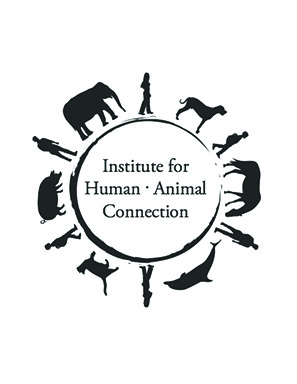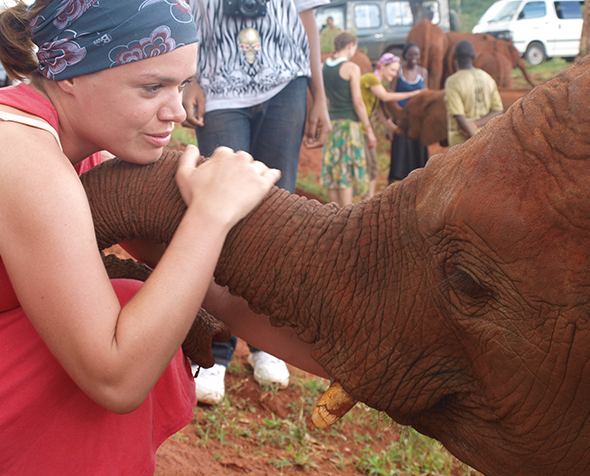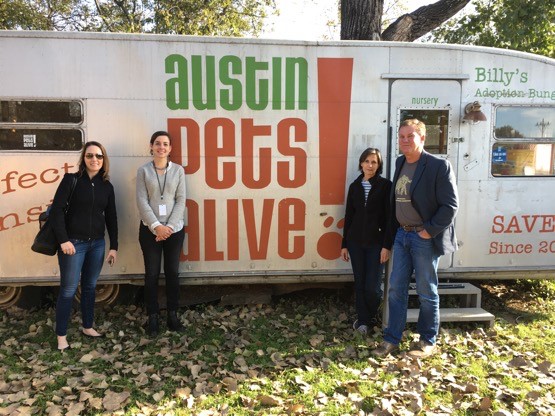Chermon Prison Dog Program
"We take care of them and they take care of us"

Everyone wins: In a new project, inmates adopt abandoned dogs, train them and help them find a home. The inmates themselves receive a certificate in dog training and earn a friend, in a place in which any warm connection has meaning. "The dog calms me," says an inmate from the Chermon Prison, "and clears me of all my thoughts of home."
When the inmate S. pets his dog Toby and looks straight into his eyes, there is no mistake. It is all about a love story with added value. "In my phone calls with my mother, the first thing she asks is how is Toby," he says. "Until he came, I felt a distressing heaviness, thoughts and worries about what was happening outside and what will be. Today I feel that I am in another world, a better one. Toby softens the whole feeling of the prison."
S. and Toby are part of a program that began last month and in which two inmates share the care of a dog who had been abandoned and brought to a dog shelter belonging to the "Let Animals Live" foundation. For a few months, the dog lives with the inmates 24 hours a day. During this time the inmates learn to train and educate him, thus raising the chances of finding him a warm home after leaving the inmates (and at the same time they receive great love and true friendship from their new four-legged friend). The inmates themselves will receive a certificate in dog training, which will allow them at the end of the sentence to have a profession, and thus all sides are winners.
A few years ago, a philanthropic foundation brought up the idea, based on a similar successful project in the U.S., and presented it to Minister of Internal Security Gilad Erdan. He was enthusiastic and decided to initiate the first pilot of the initiative in Israel, accompanied by "Let Animals Live" and the prison services. Minister Erdan, who grew up on a moshav (community farming settlement) and surrounded by animals, throughout his political career has done much to help animals. Professor Philip Tedeschi from Denver University, a researcher in the area of human-animal relationships in many areas who runs the project in the U.S., came specially in order to help establish it here in Israel, which was enough for Erdan to stand up to the challenge and allow for the initiation of the pilot program. "At this point in time, the program is being carried out to a limited extent, but if a success, as far as I'm concerned, the goal could be hundreds of dogs a year," said the Minister. "Today when I am dealing with personal security and with prevention of violence, I can say that those who are capable of cruelty towards helpless animals, can act the same way towards humans, at the moral level and the level of cruelty. A society is measured, as I see it, by the way people relate to those who are helpless, and animals are among them. We must serve as a model and I will fight for this."
Chermon Prison was chosen to begin the project since there are there many green areas and well-kept gardens, buildings which look like normal buildings, and inmates who are free to go in and out of their rooms as they please. "The preparations for the program were not simple," said Chagit Kamerlaker, education officer at the Chermon Prison. She added, "There was some very complicated logistic planning that was made possible through the funding of the foundation and the prison authorities. We had to set up a yard with pens for the dogs. In each room of two inmates, there is a large crate in which the dog sleeps at night and we built special gates, and therefore we had to change the structure of the rooms." The ten inmates who took part in the pilot were carefully selected, and they had to meet certain conditions, including a prison sentence of at least eight months and a clean record of abuse towards animals in general and dogs in particular.
In order to educate the dog, the inmates keep a clear daily schedule: At 6:30 a.m., after the inmate count, the dogs are taken for a walk in the nearby yard. During breakfast, as in other meals, the dog is waiting with one of the inmates while his friend dines in the dining room, and after he finishes, they will change places. At 7:30, the professional staff goes from cell to cell and checks how the night went and how the dogs and inmates were doing, while also checking the equipment. Each dog then accompanies the pair of inmates responsible for daily activities – employment or education – and after lunch they study the theoretical and practical aspects of training. Toward the end of the day – during which they make sure not to leave the dog alone for even one moment – the inmates and dogs get free time to strengthen their relationship, to practice what they learned, and just to have fun together.
The magic that the project generates is strongly felt among the inmates. K., who is sentenced to forty months in prison for fraud offenses (for which he is serving a second term), says that living alongside a dog is not foreign to him. At home he has a Pekingese, but he also admits that the connection with the dogs in the project is special: "They teach us a lot, and as I take care of him, he takes care of me. I discovered things about myself that I didn't know – the dog calms me, helps me to communicate with other inmates. We talk about what bothers us, and if we did not have the dog with us, we would never open up about these things. I want to use what I have learned in my life outside, in terms of how I deal with my children, because a dog is just like a child."
K., a single father of an 8.5-year-old boy, says he will want to continue working with dogs even after he is released. "This process has a great effect on me. It is not obvious that an inmate will approach a dog. This is something that will always stay with me and I will remember that since I loved so much and invested and had fun, I will try as hard as I cannot repeat my crimes. I do not say like everyone else that this is my last sentence and I won't come back here. There is no assurance for that, but I will do everything in order not to come back. If I get certificate as a dog trainer, I would very much like to work in this on the outside. The first thing I will do when I get out is to adopt another dog so I will not forget where I came from. He will remind me of where I was."
Inmate S. shares his cell with another inmate and both are going through the process with a little dog, Toby. S.'s friend has already served eight years of a 12-year sentence. He says, "I am very attached to Toby. When I finish my process and leave prison, I very much want to get a dog. I am always with him, prefer to be with him all the time and not to go outside, to look at him, to see him jump and play, to teach him new things. I have been in prison for many years and before the committee meets to discuss my release, I was worried all the time, what would I do outside of the prison after so many years inside. Everything would be new. Thanks to Toby, I am able to prioritize. I hope he will remind me that this is what life is all about and that it's not worth it to get lost again there outside. I have a two-year-old daughter and an eight-year-old son. Both of them were born while I was here and I was not able to take part in raising them. For me, Toby is like a son who I never raised. He came to me, frightened with his tail between his legs, startled. Now he doesn't stop running and jumping."
S. agrees and adds, "A dog cleans all my thoughts, whether emotionally or in terms of my thoughts of home, family. He makes my heart feel good. When I see him happy, jumping and doing new things, it amazes me. My family outside talks about him a lot and they want to adopt him. I'm still not sure that it's possible. Every dog here has his story, exactly like people. We are taking care of him and he takes care of us."
The tremendous progress and added value of the program can be clearly recognized in the dogs as well. "Each one of them has a different story and different difficulties, but all of them, like all animals and people, need warmth and a caress, as well as discipline, someone to take care of them and help them deal with the world," said the CEO of the Let Animals Live foundation, Yael Arkin. "I am sorry to say that there are hundreds of abandoned dogs in Israel. We must choose the younger ones among them, so that the training will be more effective and they will be more suited for being raised in prison conditions."
Efrat Nofach Kaneri, the foundation's dog trainer, adds, " I clearly see the influence. The dogs arrive frightened and without a drop of trust in humans, and here they have an opportunity, as opposed to any other place, to build trust day-by-day, hour-by hour, while they are close to a human, and this is exactly what the dog shelters do not have the possibility to offer." Gal Bachar, also a trainer at the Let Animals Live foundation, firmly believes in the program. "Before I came to the prison, I was a trainer in a shelter belonging to the foundation. There were three trainers for 200 dogs. The attention that each dog received was very limited as opposed to what the dogs here receive. The atmosphere here is much less tense compared to the shelter. The progress here is much faster. The dogs experience something very close to what they will experience in their permanent home."
As part of the project, an adoption day is being planned, in which the dogs will be handed over, and will be held within the prison walls. Among other reasons, the hope is to strengthen the relations with the community and to allow people from the outside a view of what is happening here. No one is under the illusion that saying farewell will be easy. The inmate's life is filled with separations – from freedom, from family, from the life they knew before. For this reason, they are prepared for this separation from the first day of the process with the dogs. "Their fear from the first moment comes up in many conversations," says Kamerleker. "I think that this process somewhat reduces the pressure of separation, but I have no doubt that it will be difficult for both sides."
K. agrees with a sad smile. "It's not simple to become attached to a dog that you know that, after four months, will leave. I try all the time to remind myself not to get too attached, but it doesn't work." S. also knows that the farewell will be difficult, but unavoidable. "It hurts me a lot, but I will be happy that Toby will go to a warm home, and I hope that it will be okay for him."
This article was translated by Nancy Parish-Plass and is published with permission; the original article by Neta Bar Yosef was published in Hebrew on Jan. 11, 2018, in Israel Hayom.




